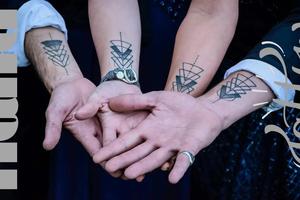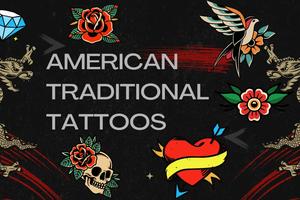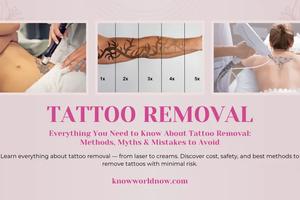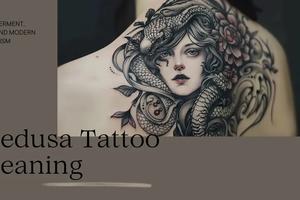Semicolon Tattoo Meaning, Ideas, and Symbolism: A Complete Guide

Key Takeaways
Essential insights to remember
✅ The semicolon tattoo symbolizes hope, resilience, and choosing to continue life’s story.
✅ Inspired by Project Semicolon, it raises mental health awareness and solidarity.
✅ Diverse designs and placements allow personal expression while sparking important conversations.
✅ It carries deeply personal meanings, sometimes including loss, survival, or solidarity with loved ones.
✅ It's a global mental health symbol fostering understanding and community.
📖 Introduction: The Story Behind a Tiny Punctuation Mark
A semicolon tattoo might seem like a simple piece of body art—a small, easily overlooked punctuation mark inked on the skin. Yet behind this minimalist design lies a profoundly moving and layered meaning. ✒️ This tattoo is far more than decoration: it's a symbol of survival, hope, and solidarity with those who have struggled with mental health challenges, including depression, anxiety, self-harm, and suicidal ideation.
The semicolon tattoo serves as a powerful personal and cultural statement—an invitation to talk about mental health openly, break down stigma, and offer visible support to anyone struggling. In this guide, we’ll explore its origins, symbolism, popular designs, placement ideas, personal stories, and the social impact of this quietly defiant movement.
✨ What Does a Semicolon Tattoo Mean?

At its heart, a semicolon tattoo represents a conscious choice to keep going when life feels like it could stop. The core symbolism is rooted in the grammatical role of the semicolon itself: it joins two related but independent clauses where the author could have ended the sentence with a period—but chose not to.
““🗣️ "The author is you, and the sentence is your life." — Project Semicolon
This metaphor resonates deeply with people who have faced depression, suicidal thoughts, addiction, trauma, or other mental health struggles. The tattoo is a personal declaration: "My story isn't over." It is a message of hope, resilience, and commitment to continue despite unimaginable challenges.
🌿 A Sign of Solidarity
- For many, it’s also an outward sign of support for loved ones battling mental illness.
- It creates a quiet, instant connection with others who understand the struggle.
- It signals a promise to break the stigma around mental health conversations.
““💬 "It’s not just punctuation; it’s survival ink."
In a world where talking about mental health is often taboo, the semicolon tattoo serves as both a lifeline and a conversation starter—offering courage to those who choose to continue their stories.
🏛️ The History of the Semicolon Tattoo Movement
The semicolon tattoo movement traces its roots to 2013, when Amy Bleuel founded Project Semicolon in memory of her father, who tragically died by suicide. Struggling with her own mental health battles—including depression, addiction, and trauma after surviving rape—Amy sought a way to transform pain into purpose. She chose the semicolon as the movement’s symbol because it perfectly captured the idea of continuation in the face of finality.

““📜 "A semicolon is used when an author could’ve ended the sentence but chose not to. The author is you, and the sentence is your life." — Project Semicolon
The movement began as a faith-based nonprofit but quickly spread beyond religious lines, uniting people across cultures and beliefs. Project Semicolon’s mission was clear and urgent:
- Raise awareness about suicide prevention
- Offer hope to those battling mental illness
- Equip communities with tools to support mental health
🌐 The Global Impact
- Social media played a massive role in popularizing the tattoo, making it a viral symbol of mental health advocacy.
- In 2017, the Netflix series 13 Reasons Why, which tackled teen suicide, further boosted awareness. Executive producer Selena Gomez and other cast members got semicolon tattoos in solidarity.
- Despite the movement’s growth, tragedy remained: Amy Bleuel herself died by suicide in 2017—a stark reminder of the movement’s importance and the ongoing need for mental health support.
““⚠️ Note: Amy’s story illustrates both the hope this symbol offers and the urgent, sometimes heartbreaking reality behind it.
The semicolon tattoo isn’t just an aesthetic choice—it’s a deeply personal, communal symbol of survival, solidarity, and the refusal to let a single moment define an entire life.
💬 Semicolon Tattoos as a Conversation Starter

One of the most powerful aspects of the semicolon tattoo is its ability to open difficult, yet essential, conversations about mental health. Unlike slogans or loud declarations, the semicolon’s subtlety invites curiosity without demanding attention. When someone asks, "What does your tattoo mean?", it becomes an opportunity to share a story of survival, solidarity, or support.
““💭 "A small mark that says so much—it’s a quiet invitation to talk about things we often hide."
🔹 Breaking the Silence
- Mental health struggles are often hidden behind silence and shame.
- A semicolon tattoo gives people permission to speak openly about experiences with depression, anxiety, trauma, and suicidal ideation.
- By normalizing these conversations, it chips away at harmful stigma.
🛑 The Vulnerability Factor
While the tattoo can spark meaningful discussions, it also requires courage to explain. For some:
- Sharing the meaning feels raw and exposing.
- There’s fear of judgment or misunderstanding.
- It can be especially hard if the tattoo is in a visible spot.
““⚠️ Warning: Before getting a semicolon tattoo, consider your comfort level with public questions. You may want to choose a placement that allows you to decide when to share.
🌟 Educating Others
Beyond personal storytelling, the tattoo serves as an educational tool:
- It prompts dialogue about suicide prevention.
- It raises awareness of mental health resources.
- It offers solidarity to those silently struggling.
A semicolon tattoo is more than personal art—it’s a tiny but mighty catalyst for empathy, awareness, and healing conversations.
🌎 Who Gets a Semicolon Tattoo (and Why)

A semicolon tattoo is a universal symbol that transcends age, gender, culture, and personal background. But while anyone can appreciate its aesthetic, those who choose to wear it often have deeply personal reasons tied to their own mental health journeys or the struggles of loved ones.
💠 Personal Survivors
Many who bear this tattoo are survivors themselves:
- Individuals who have lived through depression, suicidal thoughts, or attempts.
- People in recovery from self-harm or addiction.
- Those who see it as a daily affirmation of resilience and hope.
““💬 "It’s not just ink—it’s a promise to myself to keep going."
💠 Honoring Loved Ones
For others, the tattoo is a memorial or gesture of solidarity:
- Parents, siblings, partners, and friends honoring someone lost to suicide.
- A visible commitment to raising awareness and fighting stigma in memory of someone they love.
- A shared design among family or friends as a pact of mutual support.
💠 Building Community and Connection
- The semicolon creates a quiet but powerful bond among those who recognize its meaning.
- It's an unspoken signal that says “You’re not alone.”
- It offers comfort to strangers who see it and feel seen in return.
““🌿 Note:
Not all semicolon tattoos are tied to mental health. Some people simply love punctuation or literature, or even choose it playfully in reference to Crohn’s disease (where a person might literally have a semi-colon after surgery). It’s always important to avoid assumptions about someone’s reasons.
Whether worn as a badge of survival, an act of remembrance, or a show of solidarity, the semicolon tattoo remains a deeply meaningful choice that connects people in shared understanding and compassion.
🎨 Popular Semicolon Tattoo Designs and Ideas
While the meaning behind a semicolon tattoo is powerful on its own, many people personalize the design to reflect their unique stories and aesthetics. From minimalist marks to intricate compositions, semicolon tattoos offer nearly endless creative possibilities, each reinforcing its message of survival and hope.
““🎨 "A semicolon tattoo is a canvas for resilience—no two tell exactly the same story."
🌟 Minimalist Semicolon Tattoos
- Simple black ink on the wrist, ankle, or behind the ear.
- Clean lines, subtle placement for personal significance.
- Chosen by those wanting a discreet, private reminder of their journey.

🦋 Butterfly Semicolon Tattoos
- Symbolizes transformation and rebirth.
- Often designed with the semicolon as the body and wings spreading out.
- Perfect for those who see their survival as a metamorphosis.

❤️ Heart Semicolon Tattoos
- Merges love and resilience.
- Emphasizes self-compassion and care for others.
- Popular among those honoring a loved one or showing solidarity.

➡️ Arrow Semicolon Tattoos
- Represents forward movement after struggle.
- Arrows must be pulled back before launching forward—a metaphor for setbacks leading to growth.
- Often includes inspirational words or dates.

🌻 Floral and Nature Designs
- Sunflowers, lotuses, vines or branches intertwined with the semicolon.
- Evokes growth, hope, renewal even in dark times.
- Soft, colorful designs favored for their uplifting vibe.

✝️ Cross and Faith-Inspired Semicolons
- Combines the semicolon with religious symbols.
- Represents hope anchored in spiritual belief.
- Offers comfort and faith during recovery.

💠 Unique Personalized Designs
- Incorporating initials, dates, or meaningful quotes.
- Adding symbolic animals like cats (resilience, nine lives) or dragonflies (change).
- Highly customized to the wearer’s own journey.

✅ Design Tips:
- Choose something personally meaningful.
- Consider visibility: public statement vs. private reminder.
- Work with a tattoo artist experienced in fine-line detail for small designs.
Semicolon tattoos are as varied as the people who wear them—each one a small but indelible testament to choosing life, embracing hope, and telling a story that continues.
📌 Semicolon Tattoo Placement Ideas
The placement of a semicolon tattoo is deeply personal—and just as meaningful as the design itself. Where you choose to place it can shape how visible it is, how often you see it, and how willing you are to share its story with others.
““🗣️ "Placement isn't just about aesthetics—it's about intention."

🖐️ Wrist
- The most classic placement.
- Always visible to the wearer as a personal reminder.
- Easily seen by others, making it a conversation starter.
- Can be discreet or bold depending on size.
👂 Behind the Ear
- Subtle and intimate.
- Hidden by hair or revealed as desired.
- Ideal for those wanting privacy while still holding the meaning close.
☝️ Fingers
- Small, minimalist, trendy.
- Constantly in view but easy to miss at first glance.
- Great for a tiny, secret symbol of resilience.
🦶 Ankle
- Delicate and stylish.
- Less visible day-to-day, offering personal significance without many questions.
- Often chosen for its feminine, minimalist appeal.
👤 Neck / Nape
- Hidden under hair or clothing, or displayed with short hair/updos.
- Chosen for its balance of private meaning and occasional public visibility.
- Symbolizes carrying the reminder everywhere.
💪 Forearm / Shoulder
- More prominent and visible.
- Chosen by those wanting to share their message openly.
- Can be integrated with larger designs or words.
““⚠️ Tip:
Think carefully about your personal comfort with visibility. The more public the spot, the more you may be asked about its meaning.
🌿 Choosing Your Placement
- Consider your work environment and social context.
- Think about how often you want to see it yourself.
- Remember that this is your story—your tattoo should reflect your comfort and goals.
Whether hidden or proudly displayed, the placement of a semicolon tattoo turns it from a simple mark into a deeply intentional part of your personal narrative.
🖊️ Semicolon Tattoos for Men and Women
One of the remarkable aspects of the semicolon tattoo is its universal appeal—it’s not bound by gender, age, or cultural expectations. Instead, it offers an inclusive, deeply personal way for anyone to express resilience, hope, and solidarity in a design that feels authentic to them.
““🌟 "Ink knows no gender; neither does survival."
👩🎨 Semicolon Tattoos for Women
- Often feature delicate, fine-line artistry.
- Commonly combined with florals (roses, sunflowers, vines) or butterflies.
- Favored placements: inner wrist, ankle, behind the ear, shoulder blade.
- Designs can be minimalist or elegantly elaborate.
““💡 Tip: Many women choose subtle placements so they can reveal the tattoo only when they choose to.

👨🎨 Semicolon Tattoos for Men
- Often bolder, with thicker lines or graphic elements.
- Frequently merged with arrows, shields, helmets, or even skull motifs.
- Popular placements: forearm, bicep, calf, back of the neck.
- Emphasizes strength, warrior imagery, or personal symbolism.
““🎯 Note: Many men also opt for minimalist designs—there’s no single “right” style.

🤝 Matching and Solidarity Tattoos
- Friends, partners, siblings, or parent–child pairs get matching semicolons.
- Symbolizes shared commitment to support one another.
- Reinforces the message that no one has to fight alone.

🌿 Non-Binary and Inclusive Approaches
- Many semicolon tattoos intentionally avoid gendered symbolism.
- Abstract or purely typographic designs work for all identities.
- Emphasizes personal meaning over cultural stereotypes.

✅ Design Advice:
- Work with a tattoo artist who respects your vision.
- Choose symbolism and style that feels true to your experience.
The semicolon tattoo is more than a trend—it’s a universal symbol of survival, designed by you, for you, no matter who you are.
🌿 Personal Stories of Resilience
Semicolon tattoos aren’t just abstract symbols—they carry real, raw, deeply personal stories etched into skin. For many, these small marks serve as daily affirmations of survival, transformation, and solidarity with others who know what it feels like to stand at the edge of giving up—and choose life instead.
““💭 "Behind every semicolon tattoo is a story still being written."
📜 Erin’s Story
Diagnosed with anxiety at just eight years old, Erin says, “Things just added on from there.” At 17, during one of her darkest times, she had a small semicolon inked on her wrist.
“““I got this tattoo in one of my darkest times, and truly the tattoo saved my life because every time I caught a glimpse I knew I couldn’t give up.”
📜 Darcy’s Story
Darcy, a double major in statistics and political science, chose her semicolon as part of a fundraiser for a local mental health facility. She added song lyrics below it:
“““You gotta promise not to break, no matter how far you are bent.”
For Darcy, it’s a constant reminder that even with borderline personality and bipolar disorders, there will still be good days ahead.
📜 Amanda’s Story
Amanda got her semicolon tattoo on the inside of her left wrist after losing her boyfriend to suicide in high school.
“““I think it’s a reminder that you can pause wherever you are in life. Nothing has to end for you to just step away and take a break.”
She turned her grief into advocacy, fighting mental health stigma as a psychology major.
📜 KateLynn’s Story
KateLynn combined her semicolon with a butterfly, symbolizing the Butterfly Project for self-harm recovery. The date on her ink marks the day she quit.
“““I’m in a better place now than what I used to be, so I’m more OK with talking to people about it.”
She encourages people to “take a pause and just listen” when supporting friends in crisis.
📜 Alex Bruce-Smith’s Reflection
Journalist Alex Bruce-Smith wrote about getting her semicolon tattoo during a severe mental health crisis and later feeling conflicted about it.
“““I don’t want to think about that crisis period every time I look at my own body.”
Her story highlights that for some, the tattoo’s meaning evolves—and that’s okay.
““⚠️ Note: Every semicolon tattoo is unique. Some are constant affirmations. Others become relics of a past self. There is no single way to carry or interpret this mark.
These real-life stories show the semicolon tattoo is far more than art—it’s testimony, remembrance, and an invitation to keep going.
❤️ The Impact on Mental Health Awareness
The semicolon tattoo has evolved from a niche symbol into a powerful cultural force for mental health advocacy. Its greatest strength lies in its ability to spark meaningful dialogue, reduce stigma, and encourage those struggling to seek help without shame or fear.
““🗣️ "A single mark can be a loud cry for change—even in a whisper."
🌍 Raising Awareness One Tattoo at a Time
- Each tattoo is a tiny billboard for suicide prevention and mental health support.
- It normalizes conversations that were once taboo.
- It makes visible the invisible battles many face daily.
🤝 Building Community and Solidarity
- Tattoos act as quiet signals of shared understanding.
- They create instant connections among strangers, friends, and family.
- They remind people they are not alone in their struggles.

💬 Opening Conversations
- The subtle, intriguing design invites questions.
- It gives wearers an opportunity to educate and advocate.
- It encourages those suffering in silence to speak up or seek help.
📈 Amplifying Support Resources
- Mental health organizations use the semicolon as an emblem for their outreach.
- Campaigns and fundraisers often feature semicolon art to spread their message.
- Therapists and counselors recognize the tattoo as a sign someone might want or need to talk.
““⚠️ Note: While tattoos help raise awareness, they can’t replace professional care. True change requires accessible, well-funded mental health services and community support systems.
The semicolon tattoo movement has proven that small, personal acts can ripple out to create social change. By wearing their stories on their skin, people contribute to a collective shift toward openness, empathy, and understanding.
⚠️ Understanding the Complex Feelings Around the Tattoo
While the semicolon tattoo is often celebrated as a symbol of hope and survival, it also carries layers of complexity that aren’t always visible at first glance. For many, its meaning can shift over time, reflecting changes in their personal journey—and sometimes stirring ambivalent or painful emotions.
““💭 "A semicolon says the story isn’t over. But that doesn’t mean the story is always easy."

🌗 Evolving Meaning Over Time
- For some, the tattoo begins as a life-saving promise during crisis.
- As circumstances improve, it can become a bittersweet or even uncomfortable reminder of past pain.
- Others cherish it forever as a hard-won badge of survival.
💬 Feeling Exposed or Vulnerable
- Tattoos are inherently visible (even if placement can hide them).
- Explaining their meaning can feel deeply personal, even traumatic.
- Wearers sometimes struggle with when, how, or if to share their story.
““⚠️ Warning:
Before getting a semicolon tattoo, consider how comfortable you are talking about mental health openly. You may be asked what it means—often by strangers.
🏷️ Misunderstandings and Assumptions
- Not everyone knows the tattoo’s mental health significance.
- Some people assume it’s just a love of punctuation or a literary reference.
- Others might react with pity, curiosity, or invasive questions.
💔 Stories of Regret or Removal
- Some people, like journalist Alex Bruce-Smith, choose to remove their semicolon tattoo after healing.
- They no longer want a visible link to that period of their life.
- This doesn’t invalidate the original meaning—it simply reflects personal growth and changing needs.
““🌿 Note:
There is no single “correct” experience with a semicolon tattoo. For some, it’s a lifelong source of strength. For others, it’s a painful reminder they outgrow. Both are valid.
The semicolon tattoo’s emotional complexity is part of what gives it such depth. It’s not just about survival—it’s about acknowledging that healing is rarely linear, and that every journey is unique.
💡 Things to Consider Before Getting a Semicolon Tattoo
While the semicolon tattoo carries a message of hope and solidarity, deciding to get one is a deeply personal choice that deserves thoughtful reflection. It’s not just body art; it’s a permanent testament to your journey, your values, and your readiness to share (or protect) your story.
““🌟 "Ink is forever—so is your right to choose when and how to tell your story."

🧭 Personal Readiness and Reflection
- Ask yourself why you want the tattoo.
- Consider if you’re currently in crisis, and whether it feels grounding or triggering.
- Reflect on whether it will serve as a positive reminder for you in the long term.
👀 Comfort with Visibility
- Semicolon tattoos often prompt questions from strangers, friends, and family.
- Decide whether you’re prepared (and want) to explain its meaning.
- Consider placement carefully: wrist and forearm are highly visible, while behind the ear or ankle offer more privacy.
📌 Public Meaning vs. Private Interpretation
- Remember that while many see the semicolon as a mental health symbol, not everyone will recognize it.
- Some may misinterpret it as purely literary, or not understand its emotional weight.
- Be prepared for both supportive and awkward reactions.
💬 Talking with Loved Ones
- If you want, share your plan with close friends or family.
- These conversations can deepen understanding and support.
- It can also help you clarify your own reasons and readiness.
🩹 Considering Mental Health Support
- If you’re struggling, consider talking to a counselor or therapist before getting the tattoo.
- Tattoos can be a meaningful part of healing, but they’re not a substitute for professional help.
- Getting inked during crisis should be a mindful, not impulsive, choice.
““✅ Tip:
Choose an experienced, compassionate tattoo artist who will respect your story and help bring your vision to life.
Ultimately, getting a semicolon tattoo is a personal declaration: “My story isn’t over.” Make sure it’s a message you’re ready to wear with pride and intention.
🌟 Semicolon Tattoos Beyond Mental Health
While the semicolon tattoo is most famously associated with mental health awareness and suicide prevention, it has also evolved to hold other meanings and forms of personal significance. Its versatility as a symbol and its subtle design make it appealing for many different reasons.
““✨ "A semicolon isn’t just survival—it’s a sign of whatever story you choose to tell."

📚 Literary and Grammatical Fans
- Writers, editors, and grammar enthusiasts often love the semicolon for its linguistic beauty.
- For them, it symbolizes a love of words, nuance, and the art of storytelling.
- It can be a playful nod to their craft or profession.
🩺 Crohn’s Disease Community
- In a completely different context, people with Crohn’s disease sometimes use the semicolon tattoo humorously and poignantly.
- Because surgical treatment can involve removing part of the colon, they may quite literally have a semi-colon.
- It becomes a badge of resilience, humor, and solidarity within that medical community.
🎭 Personalized, Abstract Meanings
- Some choose it for its aesthetic minimalism—just a cool, subtle design.
- Others see it as a broader metaphor: pause and reflect before reacting, take time to breathe, or embrace life’s complexity.
- Couples or friends may get matching semicolons as symbols of ongoing connection or shared journeys.
““📝 Note:
Never assume you know the reason behind someone’s semicolon tattoo. While mental health advocacy is its most famous meaning, each wearer’s story is unique.
The semicolon’s power lies in its flexibility: it’s a universal invitation to continue the sentence, whatever that sentence may be. Whether for solidarity, survival, humor, or art, it remains a quiet but potent form of self-expression.
🏁 Conclusion: More Than Ink — A Symbol of Survival and Solidarity
A semicolon tattoo is more than just ink on skin—it’s a profound, living testament to survival, resilience, and the choice to keep going when life feels unbearably heavy. Whether it’s a personal reminder to pause instead of ending the sentence, a tribute to someone lost, or a gesture of solidarity with those still fighting, this small mark carries an enormous weight of meaning.
““💭 "My story isn’t over yet."
Its power lies in its simplicity and universality. The semicolon crosses borders of age, gender, culture, and language. It invites conversation, breaks stigma, and builds communities of understanding and empathy. It has saved lives not by magic, but by making it just a little easier to say, “I’m not okay,” and to hear, “Me too.”
But the semicolon tattoo is also deeply personal. Its meaning can evolve over time—offering comfort, stirring vulnerability, or even prompting reconsideration. That complexity is part of what makes it real. It’s your story, your choice, your pause.
If you’re considering one, take your time. Reflect on your reasons, your readiness, and your design. Talk to someone you trust. And know this: no matter what, your story is still being written. The semicolon says you have the power to choose what comes next.





